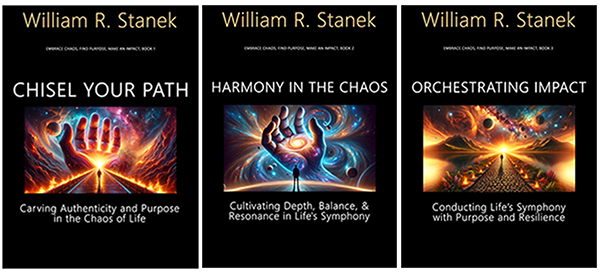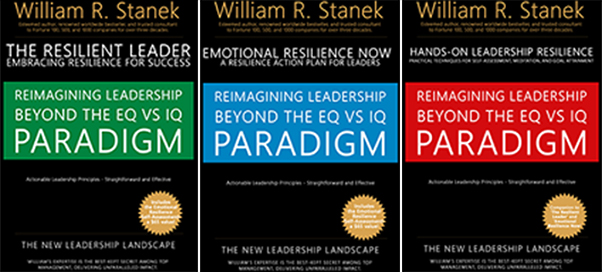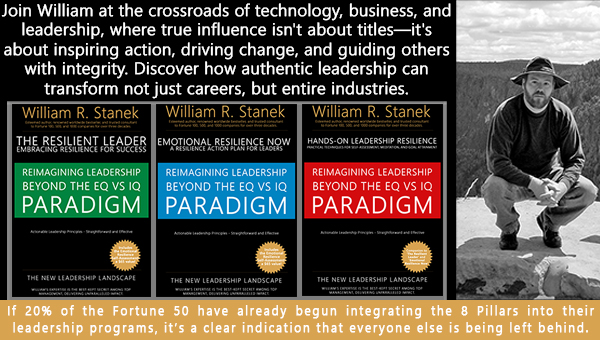

Mindful Living
In our fast-paced world, mindfulness offers a path to connection and inner peace. The "Mindful Living" series by William and Hui Cha Stanek encourages you to slow down, be present, and transform your everyday life. Whether you’re new to mindfulness or deepening your practice, these articles provide practical guidance for living with purpose, presence, and clarity. Embrace each moment with awareness, and connect more deeply with yourself and the world around you.

Transform your life with practical wisdom. Discover William Stanek's 'Living Well' series—your guide to a balanced and fulfilling life.
Discover William Stanek's Exclusive Art Collection
Explore and purchase the stunning art featured on this site. Own a piece of William Stanek's unique and captivating artwork today!
(January 29, 2025) The Role of Music in Daily Life: Using Sound to Boost Your Mood
Music has been a part of the human experience for thousands of years, transcending cultures, languages, and generations. Whether it’s a powerful symphony, a catchy pop tune, or the soothing sounds of nature, music has a profound ability to influence our emotions and state of mind. For Hui Cha and me, music has always played a significant role in our daily lives, helping us navigate the highs and lows with greater ease and joy. From lifting our spirits during challenging times to enhancing our focus during work, music has been a constant companion, shaping our moods and enriching our lives.
Incorporating music into your daily routine can be a simple yet powerful way to boost your mood, reduce stress, and increase productivity. By intentionally choosing the sounds that accompany your day, you can harness the emotional power of music to enhance your well-being and create a more positive and fulfilling daily experience. In this article, we’ll explore the benefits of using music to influence your mood, share tips for incorporating music into different aspects of your daily routine, and offer insights into how sound can become a tool for improving your mental and emotional health.
The Science Behind Music and Mood
Music has a direct impact on our emotions, thanks to its ability to stimulate various areas of the brain, including those associated with emotion, memory, and motor control. When you listen to music, your brain releases dopamine—a neurotransmitter associated with pleasure and reward—leading to feelings of happiness and satisfaction. Additionally, music can influence heart rate, blood pressure, and cortisol levels, all of which play a role in how we experience stress and relaxation.
How Music Affects Your Mood
Music’s impact on mood is well-documented. Different types of music can evoke a wide range of emotions, from joy and excitement to calmness and nostalgia. Here are some ways in which music can influence your mood:
- Uplifting and Energizing: Upbeat, fast-tempo music can boost your energy levels, making you feel more motivated and ready to take on challenges. This type of music is great for workouts, morning routines, or when you need an extra push to get through a busy day.
- Calming and Relaxing: Slow-tempo, soft music, such as classical or ambient sounds, can help reduce stress and promote relaxation. This type of music is ideal for winding down in the evening, during meditation, or when you need to calm your mind and body.
- Focusing and Enhancing Productivity: Instrumental or background music, particularly without lyrics, can enhance concentration and improve focus. This type of music is perfect for studying, working, or engaging in creative activities.
- Evoking Emotions and Memories: Certain songs or genres of music can trigger powerful memories and emotions, helping you connect with past experiences and loved ones. Listening to music that holds personal significance can provide comfort, joy, and a sense of connection.
For us, the ability of music to influence our mood has been a valuable tool in managing stress, staying motivated, and finding moments of peace and joy in our daily lives.
How to Incorporate Music into Your Daily Routine
Integrating music into your daily routine doesn’t require a lot of effort, but the benefits can be profound. Here are some ways to use music to enhance different aspects of your day:
-
Start Your Day with Energizing Tunes:
- Begin your morning with music that uplifts your spirits and energizes your body. Choose songs with a fast tempo, positive lyrics, or a rhythm that makes you want to move.
- How to Practice:
- Create a morning playlist filled with songs that make you feel motivated and ready to tackle the day. Play it while you’re getting ready, during your commute, or as you sip your morning coffee.
- Consider using music as a substitute for your alarm clock—waking up to a favorite song can set a positive tone for the day and make it easier to get out of bed.
-
Enhance Focus and Productivity with Background Music:
- Use instrumental or ambient music to create a focused, distraction-free environment while you work or study. This type of music can help improve concentration and keep you on task.
- How to Practice:
- Choose music without lyrics, as lyrics can be distracting when you’re trying to concentrate. Classical music, lo-fi beats, or nature sounds are great options.
- Set up a dedicated workspace with your preferred background music. Play it softly in the background to create a calming and focused atmosphere.
- If you’re working on a creative project, experiment with different genres to see what stimulates your creativity and helps you get into the flow.
-
Use Music to Relax and Unwind:
- After a long day, music can be a powerful tool for relaxation. Choose calming, slow-tempo music to help you unwind and transition into a state of relaxation.
- How to Practice:
- Create a relaxation playlist with soothing sounds, such as classical music, jazz, or ambient tracks. Play it during your evening routine, while taking a bath, or as you read or meditate.
- Incorporate music into your bedtime routine to help signal to your body that it’s time to wind down. Gentle music can help you relax and prepare for a restful night’s sleep.
-
Boost Your Workout with Upbeat Music:
- Music can be a great motivator during exercise, helping you push through challenging workouts and maintain your energy levels. Choose upbeat, high-energy tracks that match the intensity of your workout.
- How to Practice:
- Create a workout playlist filled with fast-tempo, energizing songs that keep you motivated and moving. Play it during your run, gym session, or home workout.
- Match the tempo of the music to the pace of your workout. For example, use faster tracks for high-intensity intervals and slower tracks for cool-down periods.
-
Connect with Your Emotions Through Music:
- Music has a unique ability to evoke emotions and memories, making it a powerful tool for self-reflection and emotional release. Use music to connect with your feelings and process your emotions.
- How to Practice:
- Create a playlist that resonates with your current emotional state. If you’re feeling sad, choose music that allows you to explore and express those feelings. If you’re feeling joyful, choose songs that amplify that emotion.
- Use music as a form of emotional therapy—listen to songs that help you release pent-up emotions, whether through tears, laughter, or reflection.
Personal Story: How Music Became a Daily Ritual for Us
Music has always been a central part of our lives, but it wasn’t until we intentionally incorporated it into our daily routines that we truly understood its transformative power. There was a time when we both felt overwhelmed by the demands of work and personal responsibilities. The stress was taking a toll on our mood, energy levels, and overall well-being.
We decided to make a conscious effort to use music as a tool for managing stress and enhancing our daily lives. Each morning, we started the day with energizing music that set a positive tone and motivated us to take on the day. During work hours, we played instrumental music that helped us focus and stay productive. In the evenings, we unwound with soothing sounds that helped us relax and prepare for a restful night.
The impact was immediate. Music helped us navigate stressful moments with greater ease, boosted our mood when we needed it most, and created a sense of rhythm and balance in our daily lives. It became more than just background noise—it became a ritual that brought joy, focus, and peace to our everyday experiences.
Practical Tips for Using Music to Enhance Your Mood and Productivity
Incorporating music into your daily routine is a simple yet powerful way to boost your mood, reduce stress, and increase productivity. Here are some practical tips to get you started:
-
Curate Playlists for Different Moods and Activities:
- Create playlists that match the different activities and moods in your day. For example, have a morning playlist to energize you, a focus playlist for work, and a relaxation playlist for winding down.
- Personalize your playlists with songs that resonate with you and evoke the emotions you want to feel during each activity.
-
Experiment with Different Genres:
- Explore different genres of music to discover what works best for you in various situations. Classical music might help you focus, while upbeat pop songs could be perfect for a morning boost.
- Don’t be afraid to step out of your musical comfort zone and try something new. You might find that a genre you hadn’t considered becomes your go-to for a particular mood or activity.
-
Be Mindful of Volume and Timing:
- Pay attention to the volume and timing of the music you listen to. Loud, energetic music might be great for a workout, but it could be distracting when you’re trying to focus on a complex task.
- Adjust the volume to suit the environment and activity. For relaxation, keep the music soft and soothing; for motivation, turn up the volume to get your energy levels up.
-
Use Music as a Cue for Transitions:
- Use music as a signal for different parts of your day. For example, play a specific song to signal the start of your workday, or use calming music to transition from work mode to relaxation mode in the evening.
- This practice can help create a sense of structure and rhythm in your day, making it easier to shift gears and stay balanced.
-
Listen to Music Mindfully:
- Take time to listen to music mindfully, focusing on the sounds, rhythms, and emotions it evokes. Let the music be a full sensory experience, rather than just background noise.
- Mindful listening can enhance your appreciation of music and deepen its impact on your mood and well-being.
Conclusion: The Transformative Power of Music in Daily Life
For Hui Cha and me, music has become much more than just entertainment—it’s a powerful tool for enhancing our mood, reducing stress, and increasing productivity. By intentionally incorporating music into our daily routine, we’ve been able to navigate challenges with greater ease, find joy in the everyday, and create a more balanced and fulfilling life.
We believe that music has the potential to transform your daily experience, providing you with the emotional support and motivation you need to thrive. Whether you’re looking to boost your energy, calm your mind, or simply enjoy the present moment, music can be a constant companion that enhances your well-being and enriches your life.
We encourage you to explore the role of music in your own life and to make it a part of your daily routine. By choosing the right sounds for each moment, you can harness the power of music to boost your mood, reduce stress, and increase productivity, creating a more positive and fulfilling day.

Join William at the crossroads of technology, business, and leadership, where true influence isn't about titles - it's about inspiring action, driving change, and guiding others with integrity. Discover how authentic leadership can transform not just careers, but entire industries.
Bring Inspiration Home
Enhance your space with William Stanek's evocative art. Each piece is crafted to inspire and uplift your everyday life.

Support The Lights of Paris by Robert Stanek, William Stanek's pen name! Through vivid historical detail and deeply moving character stories, Robert takes readers on an unforgettable journey through one of history’s most transformative times.
















